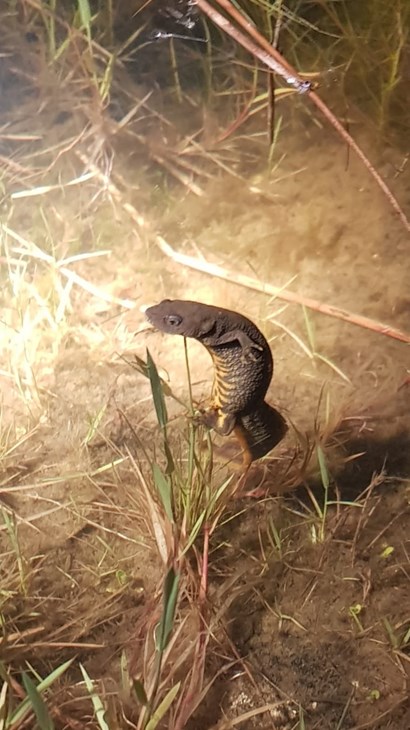Annual night-time newts surveys start

At Wild Ground, spring is one of our busiest times of the year and alongside typical conservation tasks at the reserves we start our wildlife surveys.
Ecological surveys are vital for conservation, giving an important indication into the status of various species and habitats. The data gathered means we can assess populations and where they are situated, and it helps us to tailor our approach to managing that reserve for wildlife.
Spring brings with it longer and warmer days, and this is when great crested newts begin to move from their winter hibernacula to their breeding ponds. This is the season when carry out our annual night-time great crested newt surveys, covering nearly 170 ponds across all our nature reserves and managed areas.
Great crested newts are a European Protected Species, and we manage a suite of sites for their benefit, for other amphibians, and for wildlife in general. The annual great crested newt surveys in which we participate are conducted under a special licence to detect the presence and get a measure of how abundant they are.
The data collected as part of this important annual surveillance can be fed into some very large datasets, that can in turn be extrapolated and modelled, to help build a picture of how local populations are faring. This can give early warnings of where populations appear to be in trouble, and help inform appropriate management activities designed to benefit great crested newts.
Although great crested newts and amphibians are our primary focus during our surveys, we also see a surprising array of other mainly nocturnal creatures.
We commonly see other aquatic species, including smooth or common newts, palmate newts, frogs and toads. We also regularly come across wetland birds, owls, bats, foxes, badgers and deer, and occasionally encounter some more unusual wildlife too, such as water voles, water shrew, water stick insects and water scorpions!
The night-time environment in the ponds is a completely different world and can bring with it a wonderful array of sightings that you don’t usually get during daytime hours!
Here’s looking forward to another successful season of searching, we will give an update on our results later in the year.
(Photo taken under licence.)
